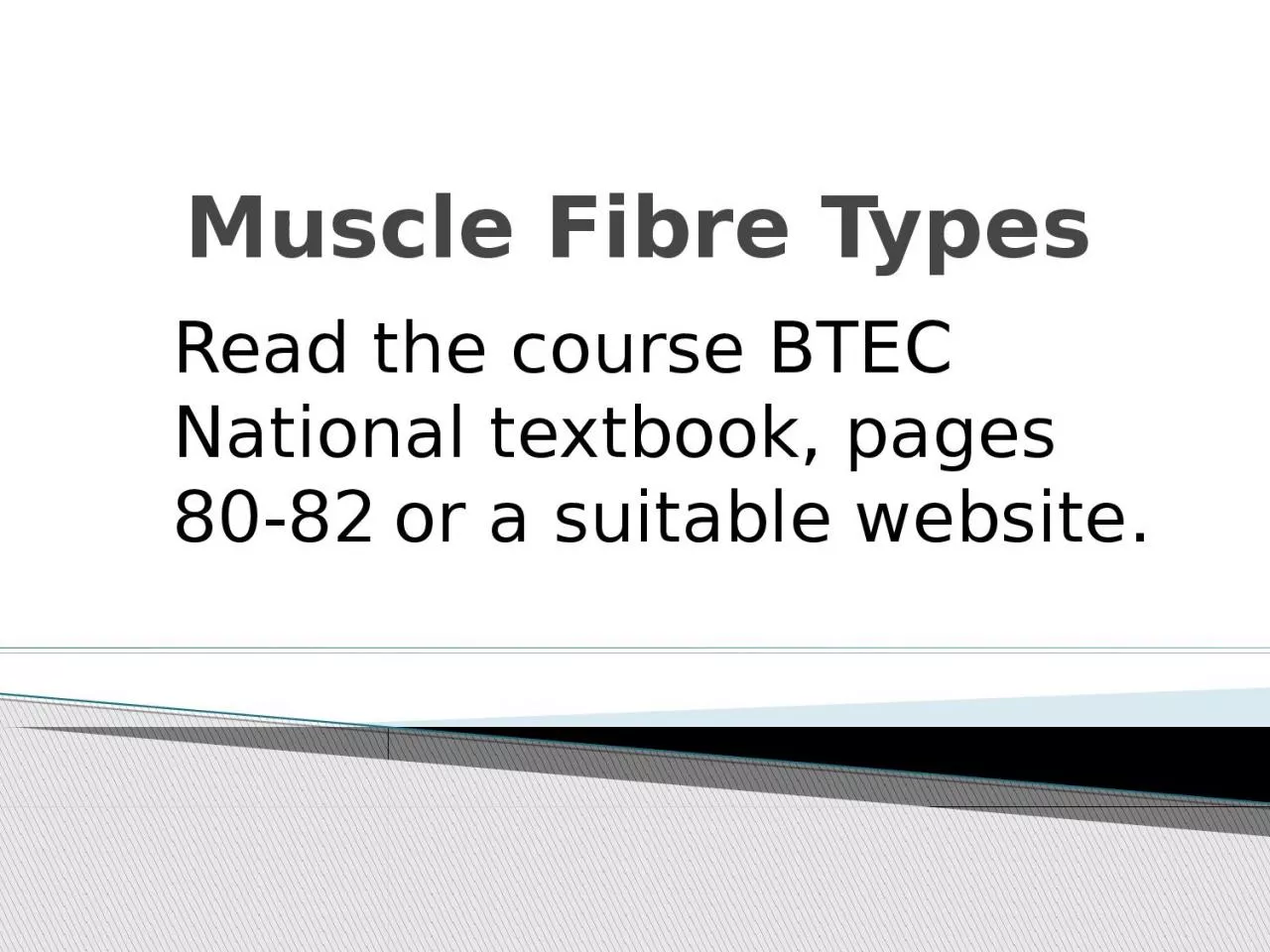

textbook pages 8082 or a suitable website From your reading and previous knowledge What are the characteristics of fast and slow twitch muscle fibres Brainstorm Slow twitch Fast twitch ID: 1015829
Download Presentation The PPT/PDF document "Muscle Fibre Types Read the course BTEC ..." is the property of its rightful owner. Permission is granted to download and print the materials on this web site for personal, non-commercial use only, and to display it on your personal computer provided you do not modify the materials and that you retain all copyright notices contained in the materials. By downloading content from our website, you accept the terms of this agreement.
1. Muscle Fibre TypesRead the course BTEC National textbook, pages 80-82 or a suitable website.
2. From your reading and previous knowledge, What are the characteristics of fast and slow twitch muscle fibres?BrainstormSlow twitchFast twitch1.2.3.4.5.6.7.8.1.2.3.4.5.6.7.8.
3. There are 3 main types of muscle fibre:Type I (slow oxidative) – slow twitchType IIa (fast oxidative glycolytic) – fast twitchType IIb (fast glycolytic) – fast twitchTypes of muscle fibre
4. Have a high level of enduranceSuited to aerobic activitySlow in generating forceContain more myoglobin and mitochondriaType I (slow oxidative) – slow twitch
5. Used during short, high intensity endurance events. Eg, 1 mile run, 400m swim.Intermediate fast twitch - Lie between Type I and Type IIb in terms of force production and resistance to fatigue.Can use both energy systems.Type IIa (fast oxidative glycolytic) – fast twitch
6. Used for highly explosive actions and events. Eg, 100m sprints, 50m swimProduces very powerful contractions but fatigues quickly.Type IIb (fast glycolytic) – fast twitch
7. Fibre type appears to be genetically determined. It is possible to increase the size of muscle fibres through training – this makes the muscle stronger. Effects of training on fibre type
8. However, further research has shown that certain characteristics of muscle fibres can be altered by training.Strength and power training can lead to conversion of muscle fibres. This conversion happens in one direction only changing type IIb fibres into slower type IIa fibres. If heavy training continues for more than a month, nearly all type IIb fibres will change into type IIa – thus reducing sprint potential.When training stops, the newly formed type IIa fibres revert back to type IIb. Body overcompensates and converts more type IIa into type IIb.Effects of training on fibre type
9. Copy the table below and think of three sporting examples for each category:Muscle fibre types in relation to sporting performance.Type IType IIaType IIb
10. When jumping for a rebound in basketball, players rely on their muscles to produce maximal contractions. What are the characteristics of the type of muscle fibres used to produce these maximal contractions? (6 marks).Example exam question